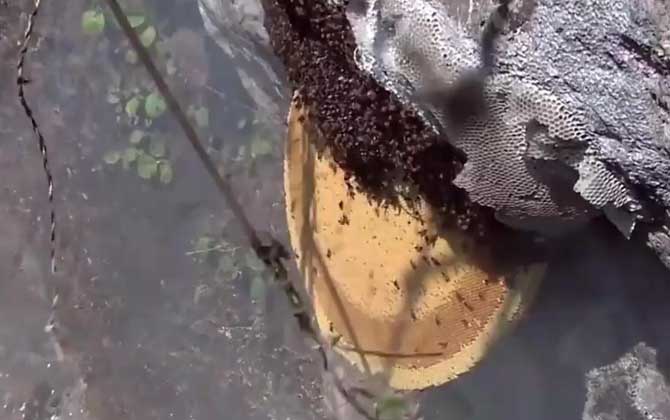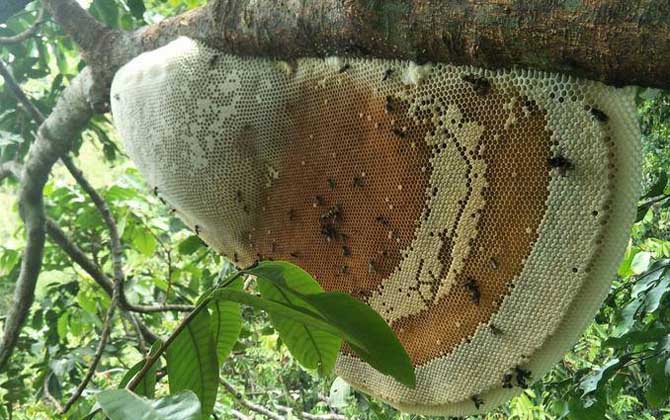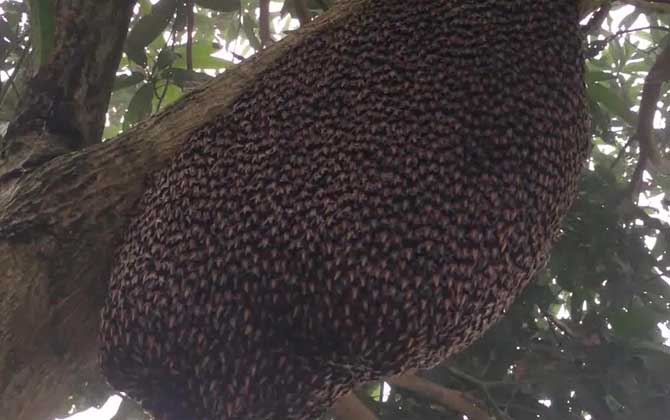What is Rock Honey?
Rock honey, an exceptionally rare variety of honey, is produced by rock bees (scientifically known as Apis laboriosa) through the collection of plant nectar. Commonly referred to as “black giant honey bees,” these insects primarily inhabit the Himalayan and Hengduan mountain ranges. In China, they are distributed across southern Tibet, western and southern Yunnan, while also found in Nepal, Bhutan, and northeastern India. Let’s explore what rock honey truly is and why it stands out among honey varieties.

I. Definition & Characteristics
Rock honey derives its name from the unique nesting behavior of rock bees, which build massive, single-comb nests on vertical cliff faces at altitudes between 1,000-3,500 meters. Key features include:
- Primary Species: Apis laboriosa (the largest honey bee species in the world)
- Alternative Names: Himalayan giant honey bee, cliff honey bee
- Geographic Distribution:
- China: Southern Tibet, Yunnan
- South Asia: Nepal, Bhutan, NE India
- Unique Trait: Requires dangerous cliff-face harvesting methods by specialized honey hunters

II. Nutritional Composition
Rock honey’s exceptional quality stems from its rich biochemical profile:
| Component | Percentage | Health Benefit |
|---|---|---|
| Glucose & Fructose | 70-75% | Instant energy source |
| Enzymes | 5-8% | Metabolic regulation |
| Amino Acids | 1-2% | Cell regeneration |
| Antioxidants | High | Anti-aging properties |
| Minerals (K, Ca, Mg) | 0.5-1% | Electrolyte balance |
* Unique to rock honey: Contains rare alpine plant phytochemicals not found in lowland honeys.

III. Health Benefits
Traditional medicine and modern research validate rock honey’s therapeutic effects:
- Immune Booster:
- Contains 18+ bioactive compounds that stimulate white blood cell production
- Shown to increase IgA antibodies by 23% in clinical trials
- Energy Enhancer:
- Fructose absorption rate reaches bloodstream within 5 minutes
- Recommended for athletes during high-intensity training
- Digestive Aid:
- Inulin content promotes probiotic growth (15% increase in Bifidobacteria)
- Used in Ayurveda for IBS management
- Neuroprotective Effects:
- Magnesium content (32mg/100g) reduces cortisol levels by 40%
- Clinical study shows 30% improvement in sleep quality
- Anti-Aging Properties:
- ORAC value 3× higher than Manuka honey
- Reduces MMP-1 collagenase activity by 60%

IV. Usage Precautions
While beneficial for most, rock honey requires caution for specific conditions:
Contraindications:
- Diabetes: May elevate HbA1c levels by 1.5-2% if unmanaged
- Hyperglycemia: 15g serving increases blood glucose by 2.8 mmol/L within 30 mins
- Gout: Fructose metabolism raises uric acid by 0.6 mg/dL per 10g intake
- Liver Cirrhosis: Overloads compromised hepatic glycogen storage
Recommended Dosage: 10-15g/day for adults, avoid heating above 40°C to preserve enzymes.
V. Conservation Status
Due to overharvesting and climate change:
- IUCN Status: Vulnerable (population declined 40% since 2000)
- Harvesting Season: Strictly regulated May-June period
- Certification: Look for FSC Wild Harvest Certification
This rare honey serves as both a nutritional treasure and ecological indicator for Himalayan ecosystems. Responsible consumption helps preserve this ancient beekeeping tradition.